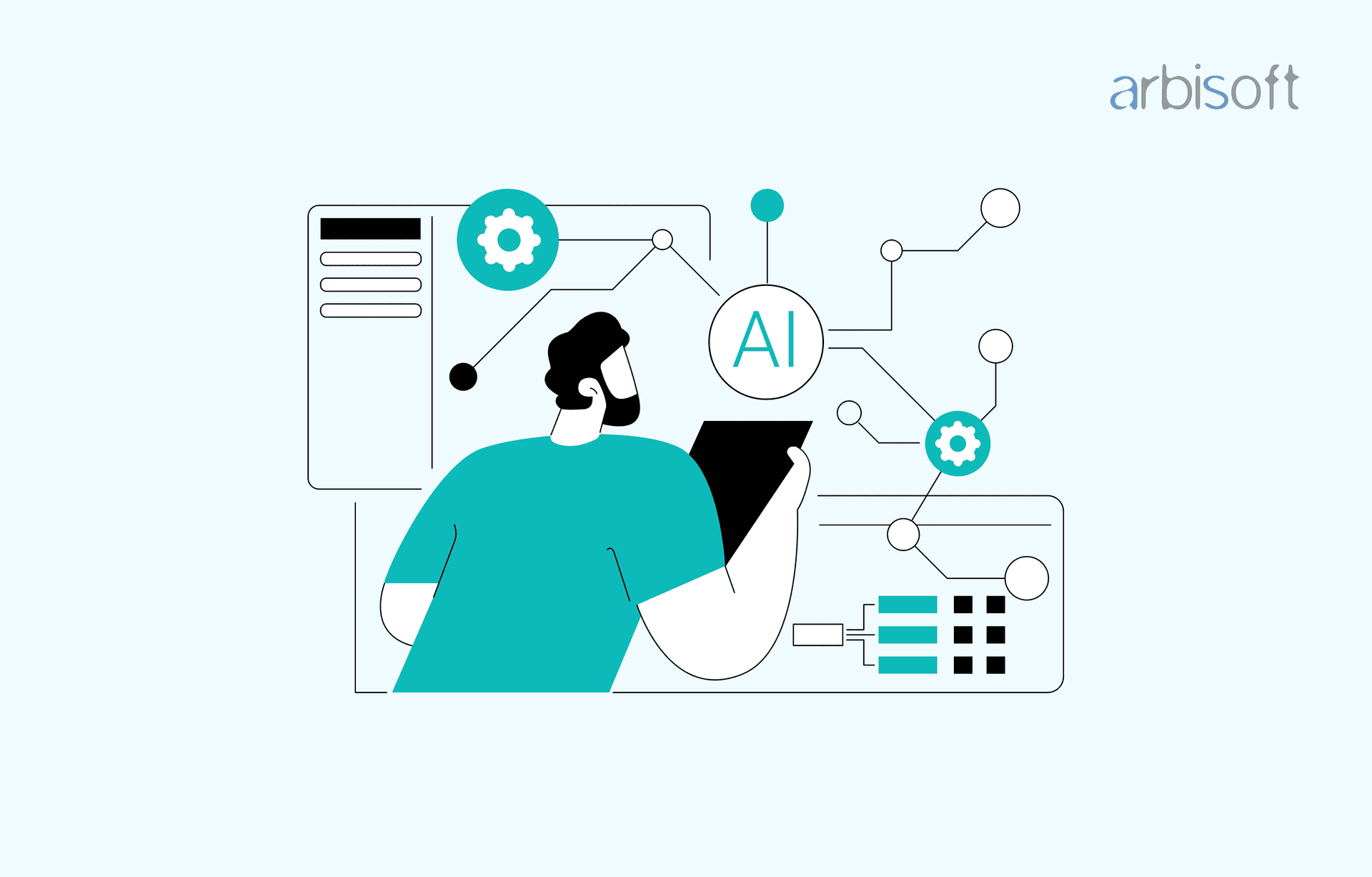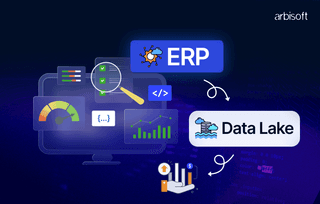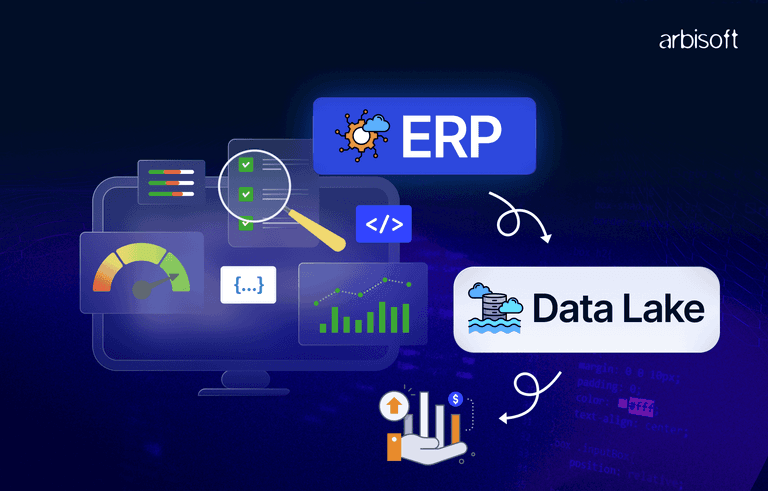We put excellence, value and quality above all - and it shows




A Technology Partnership That Goes Beyond Code

“Arbisoft has been my most trusted technology partner for now over 15 years. Arbisoft has very unique methods of recruiting and training, and the results demonstrate that. They have great teams, great positive attitudes and great communication.”
How do Neural Networks Contribute to Modern-Age Robotics?

Our brains, nature's supercomputers, house over 86 billion neurons. These tiny electrical powerhouses work in mesmerizing harmony, enabling us to do everything from tying our shoelaces to composing symphonies. Now, imagine replicating this biological brilliance in cold, hard metal.
That’s precisely what we’re doing with neural networks!
Remember those epic chess matches between humans and robots? It wasn't just about brute force calculations. It was about mimicking how a human mind strategizes, anticipates, and adapts. Those chess-playing robots weren't just crunching numbers - they were learning, evolving, and outsmarting their opponents by studying their moves! It’s like giving a robot a brain that can think, not just compute.
Let's delve into the fascinating world of neural networks and explore how they are propelling robotics into an era of unprecedented intelligence and capability.
What are Neural Networks?
These AI systems, inspired by the structure and function of the human brain, are enabling robots to perceive, reason, and act with ever-increasing sophistication.
Neural networks consist of interconnected nodes, or artificial neurons, that process information and transmit signals to each other. These networks are trained on vast amounts of data, allowing them to identify patterns and relationships within that data. Over time, neural networks can learn to perform specific tasks without explicit programming, a property known as machine learning.
There are various types of neural networks relevant to robotics. Convolutional Neural Networks (CNNs) excel at image recognition while Recurrent Neural Networks (RNNs) are adept at processing sequential data, such as sensor readings or robot movements over time.
Think of a neural network as the brain of a robot. Just as our brains learn from experiences, a neural network learns from data. It’s like teaching a child to recognize a cat. Initially, they might confuse it with a dog, but with more examples, they gradually refine their understanding. Similarly, a neural network improves its accuracy over time as it's fed more data.
Neural Networks and AI
Think of AI as a broad field focused on creating intelligent agents, while neural networks are a specific technique used to build these agents.

Neural networks have become particularly prominent in AI due to their ability to handle complex tasks like image recognition, natural language processing, and decision-making.
Simply put, neural networks are a powerful tool in the AI toolkit.
The Role of Neural Networks in Robotics
Neural networks are fundamentally changing the way robots perceive, reason, and act. Here's a closer look at their impact on specific aspects of robotics.
1. Perception
Neural networks empower robots with advanced visual capabilities. CNNs can enable robots to recognize objects, identify people, and navigate environments. Additionally, neural networks can process data from various sensors, such as LiDAR and accelerometers, to build a comprehensive understanding of the robot's surroundings. This is crucial for tasks like object manipulation and autonomous navigation.
2. Decision Making
Neural networks are revolutionizing robot decision-making through reinforcement learning. This technique involves training a neural network through trial and error, allowing it to learn optimal behaviors for specific tasks. For instance, reinforcement learning can enable robots to navigate complex environments, perform assembly tasks efficiently, or make strategic decisions in competitive scenarios.
3. Control
Neural networks are playing an increasingly important role in robot control. By analyzing sensor data and feedback signals, neural networks can fine-tune motor commands, enabling robots to move with greater precision, agility, and coordination. This is essential for tasks that require delicate manipulation or interaction with dynamic environments.
Real-World Applications
The applications of neural networks in robotics are rapidly expanding across various industries. Here are some of the most prominent examples.
1. Industrial Robotics
Neural networks are transforming industrial automation by enabling robots to perform complex tasks like assembly line operations, quality control inspections, and machine maintenance. A recent study by McKinsey & Company estimates that AI-powered robots could contribute up to $1.5 trillion to global manufacturing output by 2030.
2. Service Robotics
Service robots are becoming our everyday helpers, thanks to neural networks. Self-driving cars are a prime example. These vehicles use neural networks to see the road, identify pedestrians and other cars, and make split-second decisions to stay safe.
Beyond cars, neural networks are powering robots that can help around the house, like vacuuming or mowing the lawn. In healthcare, robots assisted by neural networks are being used for tasks like delivering medicine, disinfecting rooms, and even assisting with surgeries. It’s a game-changer for efficiency and patient care.
3. Special Applications
Neural networks are opening up exciting possibilities in unique fields. For instance, NASA's Mars rovers are using AI to navigate the challenging terrain and analyze rock samples.
In the medical world, surgeons are teaming up with robot assistants powered by neural networks. These robots can perform delicate procedures with incredible precision, leading to faster recovery times and better patient outcomes.
In agriculture, drones equipped with neural networks are revolutionizing crop monitoring. These drones can identify diseases, pests, and nutrient deficiencies by analyzing plant health data. This information allows farmers to optimize resource allocation, increase yields, and reduce environmental impact.
Did you know that neural networks power your favorite apps?
Discover how neural networks transform and drive growth opportunities behind everyday technologies that we use.

Neural networks are everywhere, even where you least expect them.
Here’s how!

Critical Considerations
While neural networks are revolutionizing robotics, it's essential to acknowledge their limitations as well.
1. Data Dependence
Neural networks are like sponges, soaking up information to learn. However, if the data is dirty, biased, or incomplete, the network will learn the wrong things. This can lead to robots making inaccurate or even harmful decisions. For instance, a self-driving car trained primarily on data from sunny California might struggle in snowy conditions.
2. Computational Powerhouse
Training these digital brains is incredibly demanding. It requires powerful computers and lots of electricity. This can make it challenging to deploy neural networks in resource-constrained environments or for real-time applications where speed is crucial.
3. Ethical Implications
As robots become smarter, we face tough ethical questions. Who is responsible if a self-driving car causes an accident? How do we prevent robots from developing biases? And what about job displacement as robots take over tasks traditionally done by humans? These are complex issues that need careful consideration.
4. Black Box Problem
One of the biggest challenges with neural networks is their lack of transparency. We can see what goes in (data) and what comes out (results), but understanding the exact reasoning behind those decisions is often difficult. This is known as the "black box problem" and it's crucial to address it, especially in safety-critical applications.
The Future of Neural Networks in Robotics
The fusion of neural networks and robotics is ushering in a new era of intelligent machines. As technology advances, we can expect robots to become increasingly sophisticated, capable of performing complex tasks and adapting to changing environments.
- Expect to see more complex neural networks and innovative deep learning solutions that can learn and adapt even faster. Imagine robots that can master new skills with minimal training, just like humans.
- Combining different types of neural networks will create robots that can excel in various tasks. For instance, a robot might use a convolutional neural network for vision and a recurrent neural network for understanding sequential data.
- Future robots will likely communicate and collaborate with humans more naturally. They could understand and respond to voice commands, anticipate human needs, and even learn from human demonstrations.
- Robots could become trusted partners in workplaces, sharing tasks with humans and complementing their abilities. This could lead to increased productivity and job satisfaction.
- Neuromorphic chips, inspired by the human brain, could dramatically reduce the energy consumption of robots. This would allow for longer operating times and more compact designs.
- Processing data closer to the robot will enable faster decision-making and reduced reliance on cloud computing. This is crucial for applications like self-driving cars where real-time responses are essential.
In A Nutshell
Neural networks are the driving force behind the rapid advancement of robotics. From manufacturing floors to healthcare facilities, neural networks are the intelligent systems reshaping industries and improving lives. Tech giants like Tesla, Amazon, Google, and Boston Dynamics are at the forefront of this revolution, investing heavily in research and development to push the boundaries of robotics and AI. However, as we harness the immense potential of this technology, it's crucial to prioritize ethical considerations, data privacy, and job displacement for a more balanced society.
























